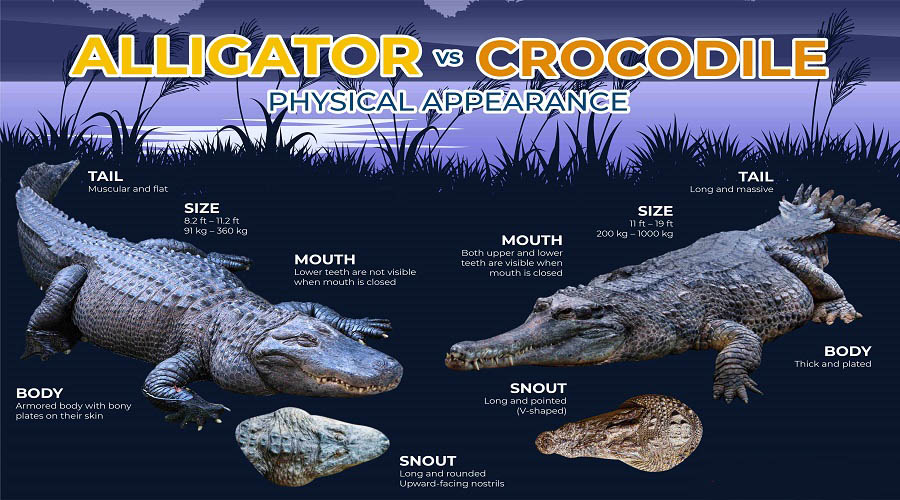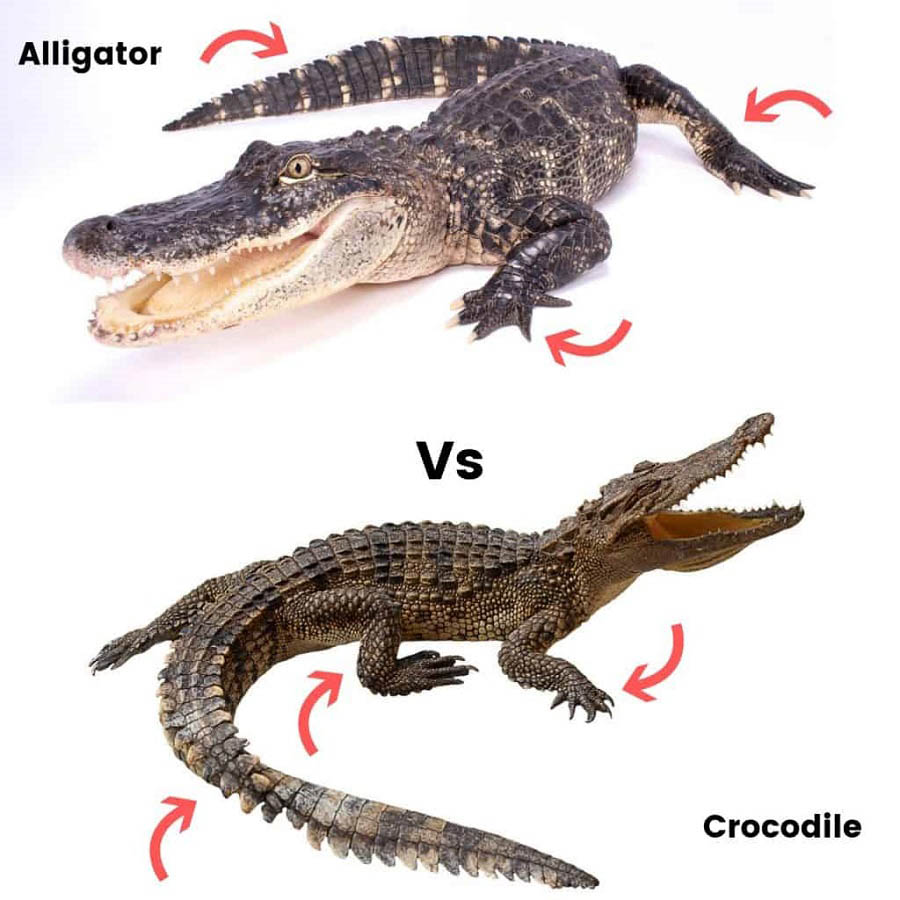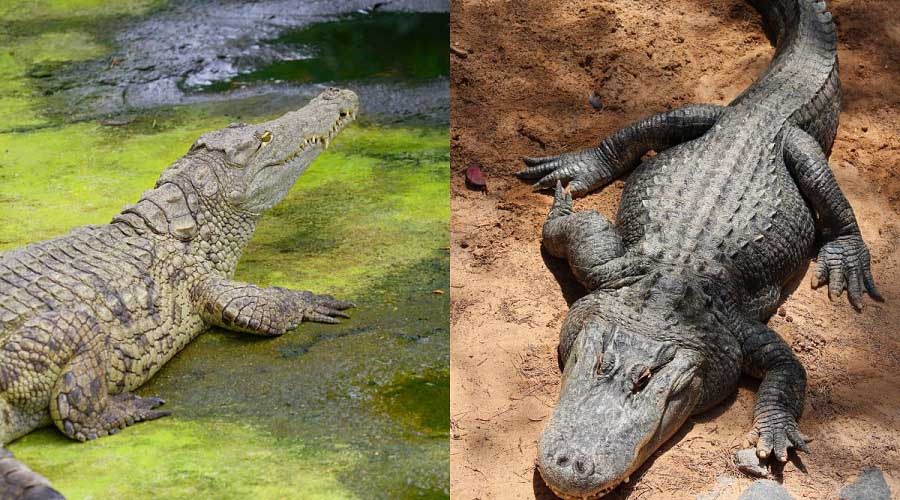Table of Contents
The crocodile and alligator are regarded as reptilian relatives for their shared traits, yet their distinctive physical features, preferred habitats, and behaviors set them apart from one another. Even though distinguishing between them may seem daunting upon initial observation, upon closer scrutiny, several vital distinctions will become apparent, signifying the individuality of each species.
Physical Differences
Although crocodiles and alligators share the same classification under the order Crocodilia, their distinguishing physical characteristics are crucial for distinguishing between the two species. In order to differentiate between these two creatures, it is important to carefully scrutinize their distinctive physical traits.
Alligators:
- Shorter, U-shaped snout
- Teeth are hidden when mouth is closed
- Darker in color, usually black or dark gray
Crocodiles:
- Longer, V-shaped snout
- Teeth are visible when mouth is closed, with the fourth tooth on the lower jaw protruding prominently
- Lighter in color, with an olive or light brown hue
It is noteworthy to state that both of the aforementioned species possess a form of defensive layer in the form of armored skin. This layer comprises of osteoderms, which are bony plates that provide a natural shield against external threats.

Difference between an alligator and crocodile Physical Differences
Habitat and Distribution
Crocodiles and alligators demonstrate a marked contrast in their preferred habitats, which consequently has a direct influence on their respective ranges.
Alligators:
- Prefer freshwater habitats, such as swamps, rivers, and lakes
- Mainly found in the southeastern United States and parts of China
- Lack salt-excreting glands, making them less suited to saline environments
Crocodiles:
- Prefer saltwater or brackish habitats
- Can be found in Africa, Asia, Australia, and the Americas
- Possess specialized glands that allow them to excrete excess salt, making them more adaptable to saline environments

Difference between an alligator and crocodile Physical Differences
Overlapping habitats:
Although crocodiles and alligators typically inhabit different environments, they are capable of coexisting in the same area. This can be observed in certain regions, such as:
- In the United States, in the southern region of Florida, it can be observed that the American alligator and the American crocodile coexist within the same habitat.
- The ecosystem of the Everglades National Park in Florida is distinguished by its coexistence of freshwater and brackish water environments.
- In certain coastal regions of Central and South America, it is possible to locate suitable habitats for both species of interest located in close proximity.
Despite being distinct in several aspects, both kinds of species are renowned for their remarkable adaptability, as evidenced by a few representatives occasionally venturing into the environments of their counterparts.
Hunting and Eating Habits
Both alligators and crocodiles are considered apex predators due to their predatory skills and dietary habits. Although they share certain similarities such as their hunting methods and preferred diets, notable differences exist between the two species with regard to their distinct hunting techniques and priorities in prey selection.
Alligators:
- Primarily feed on fish, turtles, and small mammals
- Rarely hunt in groups, except when there is an abundance of food available
- Less likely to attack humans, unless provoked or defending their nests
Crocodiles:
- Opportunistic predators that eat fish, birds, mammals, and even other reptiles
- Known to hunt in groups, particularly for larger prey
- Can be more aggressive and likely to attack humans
The fact must be highlighted that both these species are predominately ambush predators, and their hunting process is primarily based on their ability to remain undetected through the use of camouflage, as they rely heavily on stealth tactics to successfully capture their prey.
Conclusion
Although belonging to the same Crocodilia order, crocodiles and alligators showcase distinguishable physical characteristics, habitat preferences, and hunting behaviors. Being able to recognize these disparities is of paramount importance, not just for educational pursuits, but also for the preservation and admiration of these captivating reptiles.
